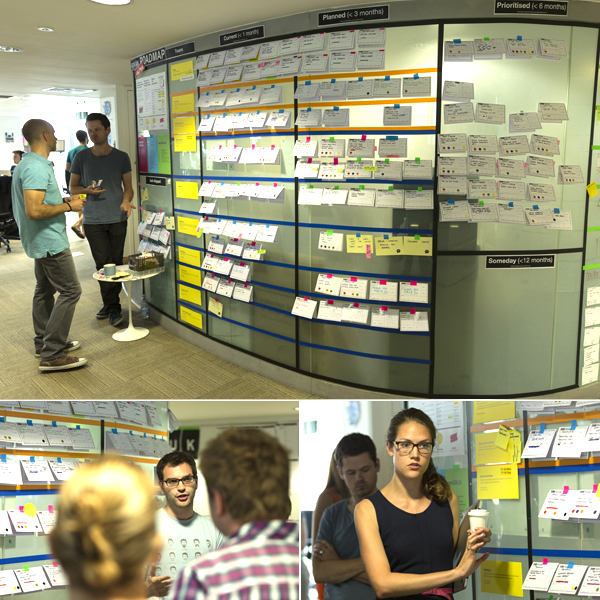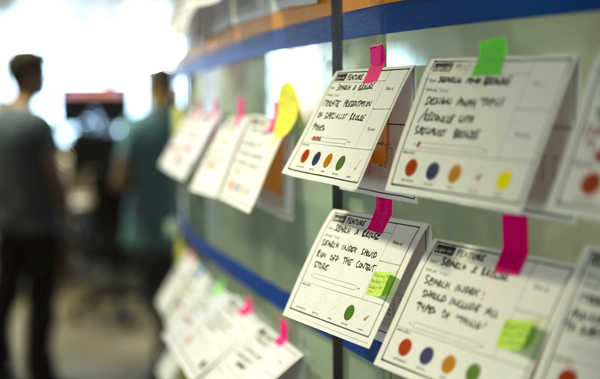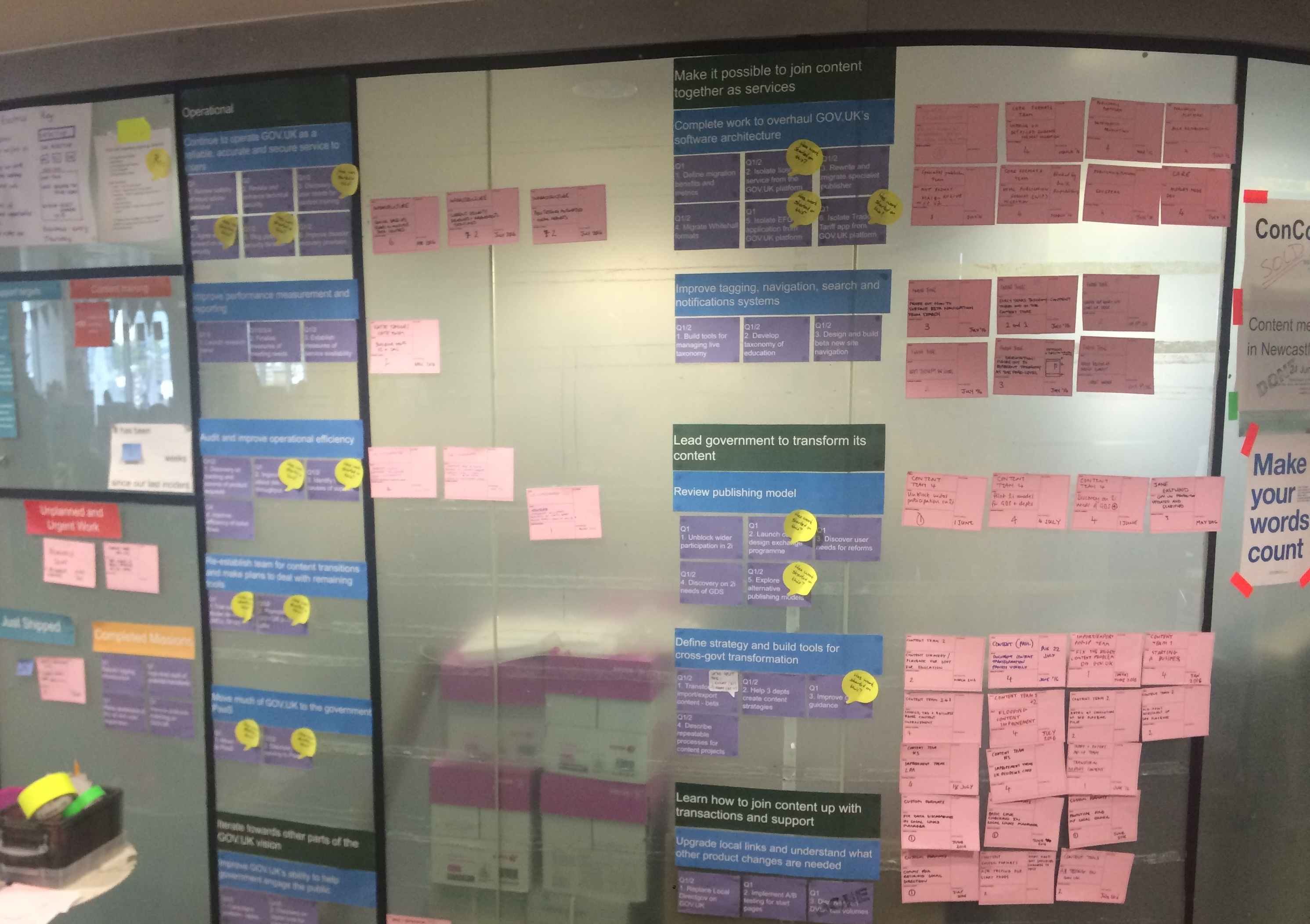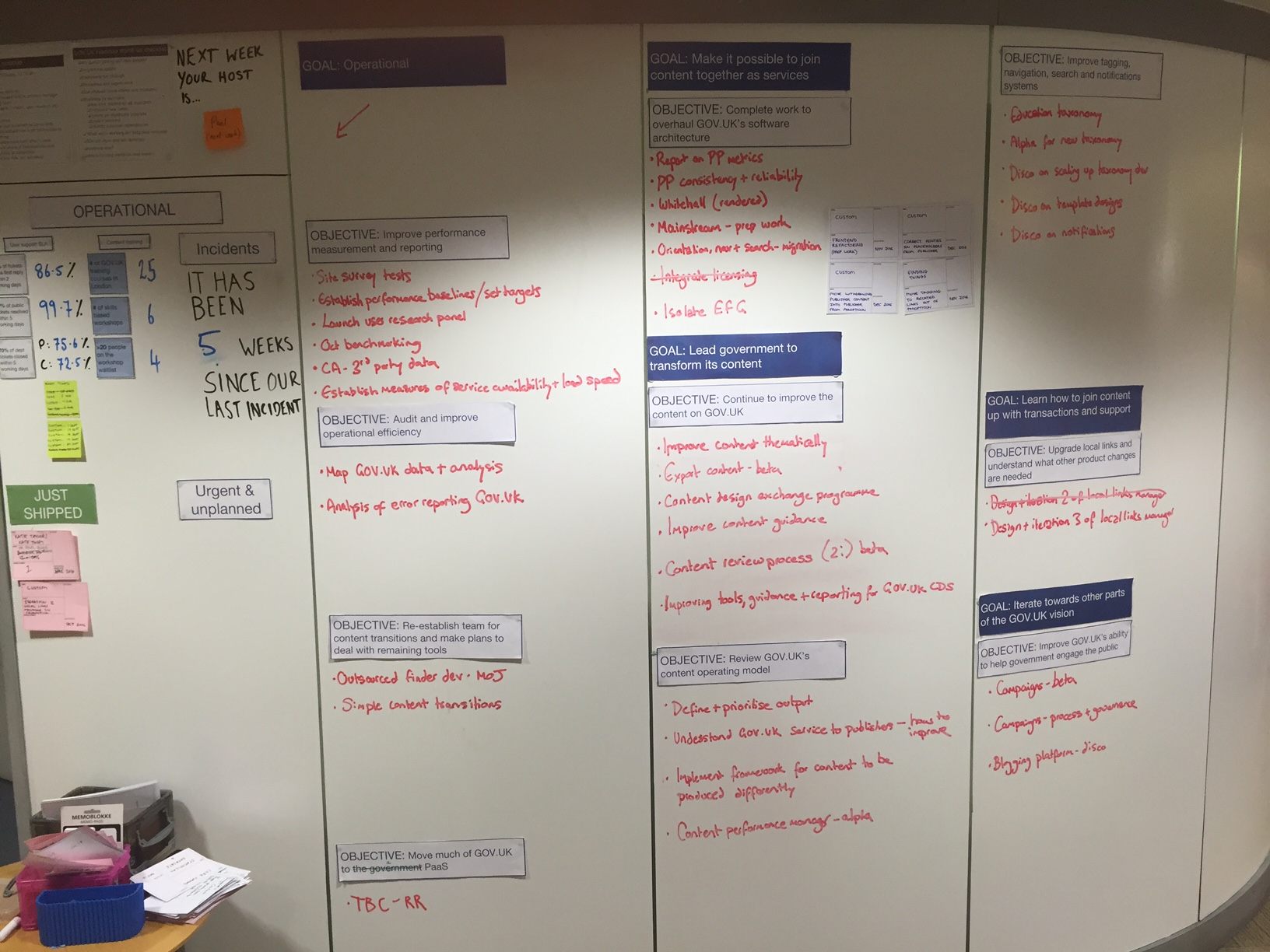The iterations of the GOV.UK product wall
02 Dec 2016GOV.UK, the UK’s single website for government information and services, is built in the open by a team within the Government Digital Service (GDS). The GOV.UK team is made up of several product, content and support teams that all work together to provide a single service for the public and for civil servants. The GOV.UK team makes their product roadmap available online and posts regular updates via the GOV.UK blog.
Within the GDS offices in Holborn, the GOV.UK product backlog is up on a physical wall. Once a week, all the teams meet around the wall and discuss their progress with their colleagues. The layout of the wall has gone through several interesting iterations over the last few months (even if the interest may be limited to agile geeks!).
The wall at the start of 2016
In the first half of 2016, the product wall looked as described in Neil Williams’s excellent article on Mind the Product:
 GOV.UK Wall, 2014 (c) Neil Williams
GOV.UK Wall, 2014 (c) Neil Williams
Each team had their own swim lanes, and the cards were very colourful and detailed.
 GOV.UK Wall cards, 2014 (c) Neil Williams
GOV.UK Wall cards, 2014 (c) Neil Williams
The cards were colour-coded, reflected dependencies that the particular had on other work, and unfolding each card would reveal even more detail.
The wall in the summer of 2016
By the summer of 2016, the team had moved away from team swimlanes and re-organised the work according to the GOV.UK objectives.
 GOV.UK Wall, summer 2016 (c) Ruth Bucknell
GOV.UK Wall, summer 2016 (c) Ruth Bucknell
Teams had to work out how their epics and stories contributed to wider GOV.UK objectives, and during the wall stand-up, the facilitator would walk through the objectives, rather than the teams. Teams might end up giving updates several times during the stand-up, if their work contributed to multiple objectives.
The wall in December 2016
 GOV.UK Wall in Dec 2016
GOV.UK Wall in Dec 2016
By December 2016, the wall has been iterated again. This time, the glass pane and printed cards have been replaced with a whiteboard and hand-written entries. All the detail has been stripped away but entries can now be added or changed much easier than before. Getting rid of the cards has meant that the person giving the update now faces their colleagues, as opposed to talking at the card.